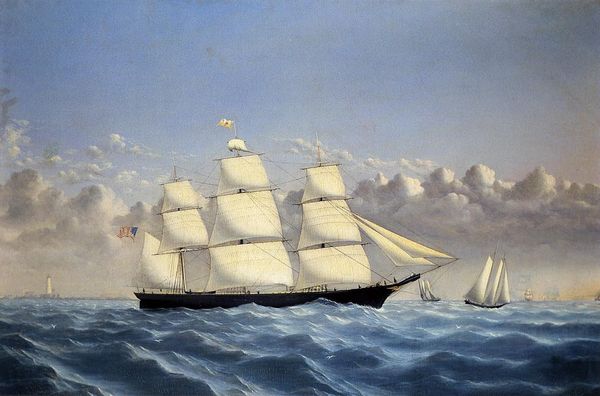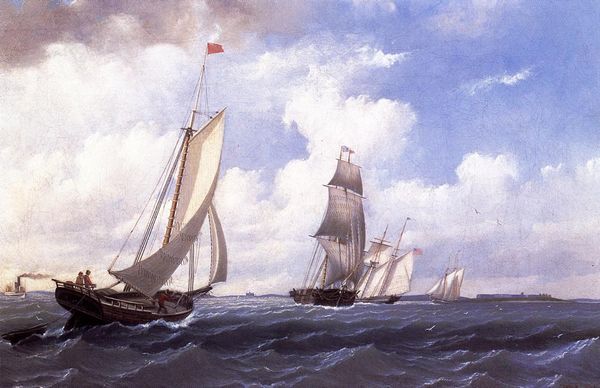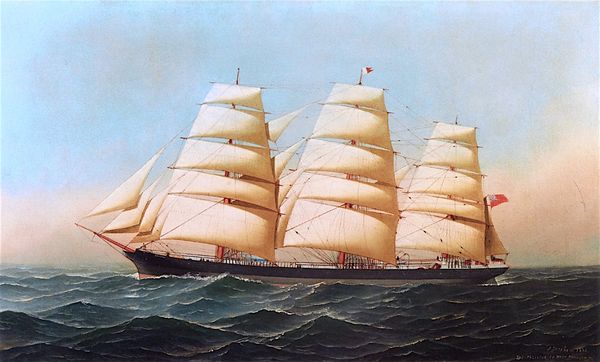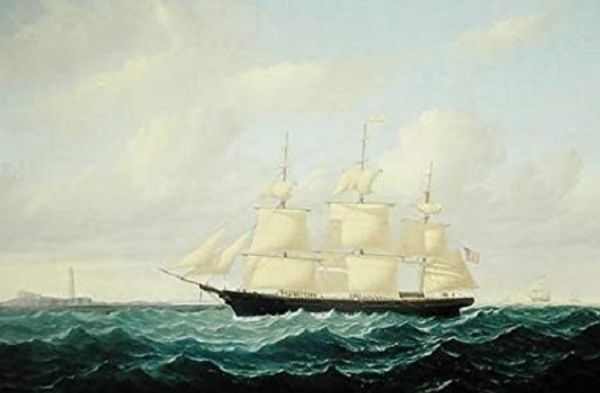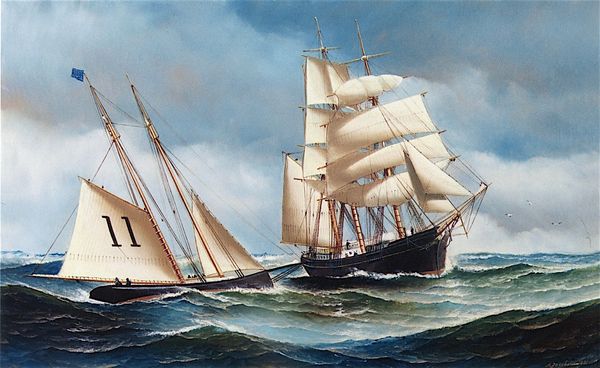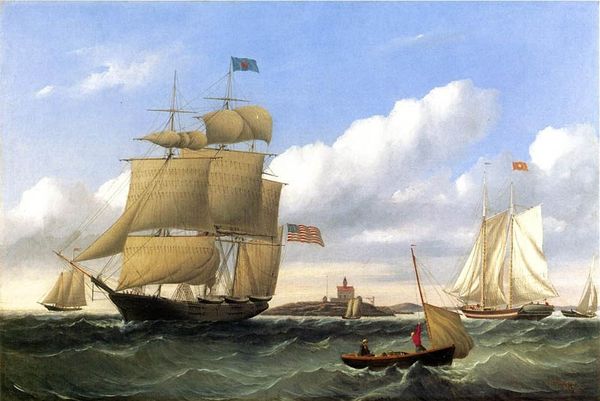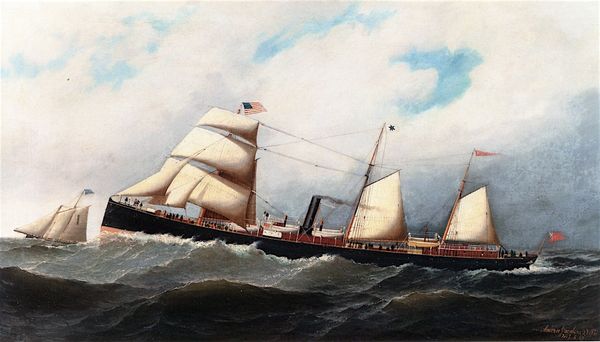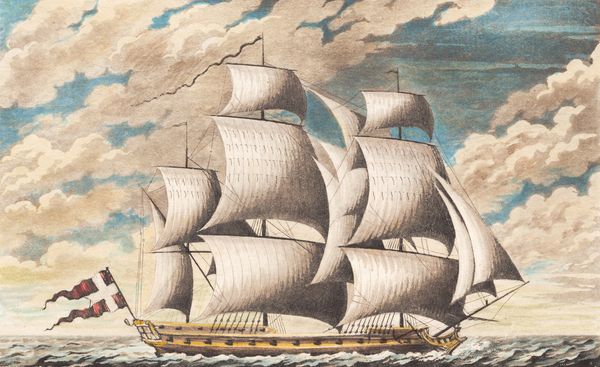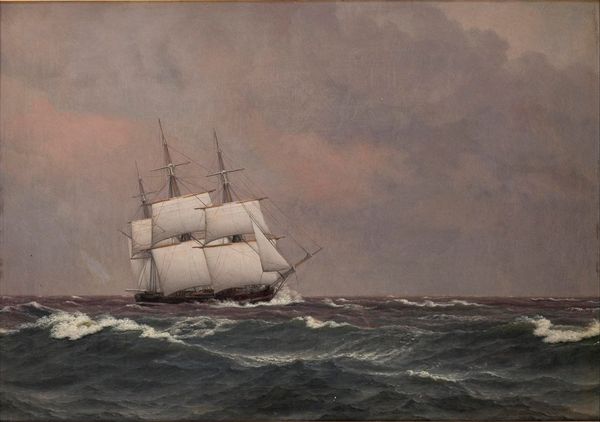
Copyright: Public domain
Curator: Look at the luminosity of this painting; Bradford's depiction of the 'Clipper Ship "Northern Light" of Boston' from 1854 positively radiates optimism, doesn’t it? The oil on canvas shows the ship cutting through a brilliant blue sea. Editor: My first thought is "restless." It captures that relentless, striving energy of 19th-century maritime expansion, romanticizing a colonial endeavor that reshaped global power dynamics, often through exploitation and ecological devastation. Curator: Absolutely, it speaks volumes. Note the ship itself— a vessel of unparalleled speed and grace at the time. In many cultures, ships symbolize journeys of transformation, passage through the liminal, connecting us to distant shores. The Northern Light seems a fitting name, alluding to enlightenment and new horizons, suggesting journeys towards prosperity and expansion. Editor: Precisely! These ships facilitated the transatlantic slave trade. They accelerated the exploitation of resources and the spread of colonial ideologies, creating a complex visual archive. That stark white against the turbulent ocean-- it suggests the whitewashing of history and a blinding, relentless drive that overlooked significant human costs. Curator: You raise a vital point. Bradford worked plein air. He observed those seas, skies and that very light. Even the white sails speak of ambition and purity of intent, but can we, from this vantage point, truly discern that 'purity' without acknowledging the intertwined narratives of capital and dominance? The waves feel energized; each crest and trough holds stories of exploration, hope, but also of untold suffering. Editor: Bradford romanticizes what was actually achieved on those seas through coloniality. While admiring this seascape for its technical brilliance and powerful visual vocabulary, we must acknowledge that 'optimism' came at a devastating price. Curator: So well said. The painting truly exemplifies art’s role in cultural memory. We hold both beauty and bitter truths within it. Editor: And it pushes us to reconsider the lens through which we interpret our collective past, recognizing that what appears celebratory on the surface can harbor layers of complex meaning.
Comments
No comments
Be the first to comment and join the conversation on the ultimate creative platform.
